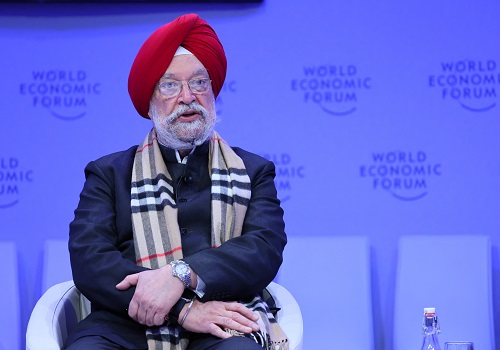Where are the Women Leaders in Healthcare?

Follow us Now on Telegram ! Get daily 10 - 12 important updates on Business, Finance and Investment. Join our Telegram Channel
https://t.me/InvestmentGuruIndiacom
Download Telegram App before Joining the Channel
Despite women accounting for half of the healthcare workforce, they remain significantly underrepresented in leadership positions, particularly at the executive and board levels. A flagship study, An Unbalanced Scale - Exploring the Female Leadership Gap in India’s Healthcare Sector conducted by Dasra, provides valuable insights into the representation and leadership opportunities for women in India's healthcare sector.
The Indian healthcare sector, one of India's largest employers, has seen substantial growth. However, statistics reveal that women in healthcare are largely concentrated on the frontline in low-paying jobs. In India, 29% of medical doctors, 80% of nursing staff (including midwives), and nearly 100% of Accredited Social Health Activists (ASHAs) are women. And yet, women occupy only 18% of healthcare leadership positions and continue to earn 34% less than their male counterparts.
India’s healthcare sector is affected by the lack of standardized and publicly available data on women’s representation across entry, mid-level, and senior roles in small, medium, and large companies. With an objective to tap into the full potential of women in leadership, and to map the status of leadership and representation in the Indian healthcare ecosystem, Dasra conducted a landscape study to collect primary qualitative data and conduct an analysis of macro-trends across healthcare sub-sectors.
The results from the study stark gender disparities within the Indian healthcare sector's leadership landscape.
Key Findings from the Report Include:
* Currently, within private hospitals—which employ 54% of the total healthcare workforce—women hold about 25-30% of leadership positions. We see a similarly stark picture in Pharmaceutical and Biotech sectors, with women occupying only 5-10% of leadership positions.
* Upon closer inspection of career pathways in the healthcare sector, a wide gap between the proportion of women participating in healthcare employment and those who occupy leadership positions is evident. When we looked at roles with highest potential for influence, for every 5 such roles, 4 are from sales, marketing, or operations background, where women’s representation is found to be very low. At entry levels, women's representation in sales, marketing, and operations is between 40-50%, yet this significantly drops to 15-20% in senior roles.
* In contrast, women are amply represented in R&D, nursing, HR, administrative, quality assurance, legal, and regulatory affairs—functions that have a low potential for influence. Preferential hiring of women for entry-level HR roles results in a significant 70-80% representation, but this drops to 20-30% in leadership positions. A similar pattern is observed in patient service teams, F&B, etc., with preferential recruitment of women at entry levels (40-60%), but with few women advancing to senior administrative levels at 15-20%.
* The key barriers to women's advancement to leadership roles, are the lack of role models, undervaluing of women's work, internalized biases, and the absence of a convincing cultural narrative around gender equity and diversity.
“Gender equity in healthcare leadership isn't just a matter of addressing gender imbalance, it's a paradigm shift towards cultural, structural and normative change. This report serves as our commitment to informed action, advancing our mission to create inclusive spaces and challenging deeply ingrained patriarchal structures”, said Neera Nundy from Dasra. “We are also grateful for the support from some courageous industry leaders, which demonstrates a collective commitment to address these core cultural and historical challenges."
The findings in this report are based on extensive research, including expert interviews, analysis of research reports, scrutiny of company reports, and the assessment of the career profiles of leaders, with special consideration given to their educational qualifications and professional journeys.
Enabling Women’s Leadership Advancement: A Roadmap for Progress
The study also recommends holistic interventions and has identified enablers to address deeply ingrained beliefs and challenges faced by women in healthcare leadership, which can be implemented at both organizational and policy levels. Some of the solutions include facilitating women's retention through measures like re-entry options after career breaks, providing flexible work policies, and prioritizing women's representation in historically male-dominated roles.
“The onus is on organizations, particularly within these sub-sectors, to harness this momentum and champion gender-equitable workforces. It is an opportunity for them to be the pioneers in building a diverse and inclusive workforce”, said Manisha Dhawan, Advisor, The Udaiti Foundation.
As a supplement to this landscape, The Udaiti Foundation has devised a ‘menu’ of practices called the ‘Pathways to Progress: Organizational Practices to Bridge the Leadership Gender gap in the Health Sector’ to advance women's leadership in healthcare.
Dasra, in collaboration with partners, will use these insights to design and test interventions that support women's leadership with the goal of driving transformative change. By fostering meaningful conversations, advocating for organizational change, and influencing policy reforms, the initiative seeks to create an environment that empowers women leaders, driving interconnected progress in healthcare and beyond.

Above views are of the author and not of the website kindly read disclaimer
























